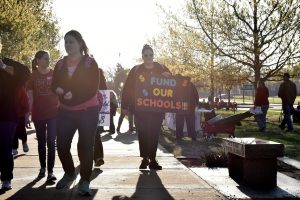
By Lucia Mutikani
WASHINGTON (Reuters) – The number of Americans filing applications for jobless benefits fell more than expected last week, pointing to sustained labor market strength that could further ease concerns about the economy’s health.
The report from the Labor Department on Thursday followed data last week showing employers hired the most workers in 10 months in December and increased wages for their workers.
Surveys showing steep declines in consumer and manufacturing activity in December had stoked fears that the economy was rapidly losing momentum.
“There are increasing risks and caution over the economic outlook in 2019, but jobless claims say the seas are calm and it looks to be smooth sailing for the economy for now,” said Chris Rupkey, chief economist at MUFG in New York.
Initial claims for state unemployment benefits fell 17,000 to a seasonally adjusted 216,000 for the week ended Jan. 5. Data for the prior week was revised up to show 2,000 more applications received than previously reported.
Economists polled by Reuters had forecast claims declining to 225,000 in the latest week. The Labor Department said only claims for Puerto Rico were estimated last week.
U.S. financial markets were little moved by the claims report.
Claims were boosted in the week ending Dec. 29 as workers furloughed because of a partial shutdown of the U.S. government applied for benefits. The federal government partially closed on Dec. 22 as President Donald Trump demanded that the U.S. Congress give him $5.7 billion this year to help build a wall on the U.S. border with Mexico.
The shutdown, which has affected a quarter of the government, including the Commerce Department, has left 800,000 employees furloughed or working without pay. Private contractors working for many government agencies are also without pay.
FEDERAL WORKER CLAIMS RISE
Claims by federal workers are reported separately and with a one-week lag. The number of federal employees filing for jobless benefits increased by 3,831 to 4,760 in the week ending Dec. 29. Furloughed federal government workers can submit claims for unemployment benefits, but payment would depend on whether Congress decides to pay their salaries retroactively.
The four-week moving average of initial claims, considered a better measure of labor market trends as it irons out week-to-week volatility, rose 2,500 to 221,750 last week.
The economy created 312,000 jobs in December. The unemployment rate rose two-tenths of a percentage point to 3.9 percent as some unemployed Americans piled into the labor market, confident of their job prospects.
While labor market strength has helped to calm fears that the economy, tighter financial market conditions and slowing global growth could make the Federal Reserve cautious about raising interest rates this year.
Minutes of the U.S. central bank’s Dec. 18-19 policy meeting published on Wednesday showed “many” officials were of the view that the Fed “could afford to be patient about further policy firming.”
The Fed has forecast two rate hikes this year. Fed Chairman Jerome Powell and several policymakers have said they would be patient and flexible in policy decisions this year.
Thursday’s claims report also showed the number of people receiving benefits after an initial week of aid fell 28,000 to 1.72 million for the week ended Dec. 29. The four-week moving average of the so-called continuing claims increased 15,250 to 1.72 million.
November’s wholesale inventories report from the Commerce Department’s Census Bureau, which was scheduled for release on Thursday, will not be published because of the government shutdown.
(Reporting by Lucia Mutikani; Editing by Paul Simao)









